Penggunaan Geogebra Untuk Meningkatkan Hasil Belajar Peserta Didik Pada Materi Sistem Pertidaksamaan Linear Dua Variabel
Published:
2025-04-25Issue:
Vol. 1 No. 1 (2025): AprilKeywords:
Hasil Belajar, SPtLDV, GeoGebraAbstract
This study aims to improve the learning outcomes of Grade X students at SMAN 4 Mataram in the topic of Systems of Two-Variable Linear Inequalities (SPtLDV) through the use of GeoGebra as an instructional media. The method used is Classroom Action Research (CAR), consisting of two cycles, each including the stages of planning, action implementation, observation, and reflection. The research subjects were 30 Grade X students. Data collection techniques involved a pre-test, as well as tests and observations in Cycle I and Cycle II (after the implementation of the actions). The results showed an increase in the average learning outcomes of students from 50% in the pre-cycle to 65% in Cycle I and 90% in Cycle II. The use of GeoGebra helped students visualize the solutions to SPtLDV interactively, enhanced engagement, and strengthened conceptual understanding. Thus, GeoGebra is effective as a learning medium to improve students' mathematics learning outcomes on the topic of SPtLDV.
References
Edusainstek, S. N., Yusrina, D., Millati, I., & Prihaswati, M. (2020). Analisis Minat Belajar Peserta didik Pada Materi SPTLDV Berbantu Aplikasi Geogebra, 4(1), 7–15.
Hendriana, H. (2014). Matematika untuk Guru: Kompetensi Pedagogik dan Profesional Guru Matematika. Bandung: Refika Aditama.
Hohenwarter, M., & Preiner, J. (2007). Dynamic Mathematics with GeoGebra. The Journal of Online Mathematics and Its Applications.
NCTM. (2000). Principles and Standards for School Mathematics. Reston, VA: National Council of Teachers of Mathematics.
Ruseffendi, E.T. (2006). Pengantar kepada Membantu Guru Mengembangkan Kompetensinya dalam Pengajaran Matematika untuk Meningkatkan CBSA. Bandung: Tarsito.
Suharni, E., & Purwanti, E. (2019). Meningkatkan Hasil Belajar Matematika Melalui Model Pembelajaran Problem Based Learning. Jurnal Pendidikan dan Pembelajaran Matematika, 5(2), 112–121.
Yasmin, A. (2019). Strategi Guru dalam Menumbuhkan Minat Belajar peserta didik Melalui Inovasi Pembelajaran. Jurnal Ilmu Pendidikan, 21(1), 55–63.
Zbiek, R.M., Heid, M.K., Blume, G.W., & Dick, T.P. (2007). Research on Technology in Mathematics Education. In F. Lester (Ed.), Second Handbook of Research on Mathematics Teaching and Learning.
Author Biographies
Junaidi Junaidi, Universitas Mataram
I Nyoman Sulastra, SMAN 04 Mataram
Hera Gusrianti, Universitas Mataram
License
Copyright (c) 2025 Junaidi Junaidi, I Nyoman Sulastra, Hera Gusrianti

This work is licensed under a Creative Commons Attribution-ShareAlike 4.0 International License.
Authors who publish with Jurnal Profesi Guru Indonesia (JPGI) agree to the following terms:
- Authors retain copyright and grant the journal right of first publication with the work simultaneously licensed under a Creative Commons Attribution License 4.0 International License (CC-BY-SA License). This license allows authors to use all articles, data sets, graphics, and appendices in data mining applications, search engines, web sites, blogs, and other platforms by providing an appropriate reference. The journal allows the author(s) to hold the copyright without restrictions and will retain publishing rights without restrictions.
- Authors are able to enter into separate, additional contractual arrangements for the non-exclusive distribution of the journal's published version of the work (e.g., post it to an institutional repository or publish it in a book), with an acknowledgement of its initial publication in Jurnal Profesi Guru Indonesia (JPGI).
- Authors are permitted and encouraged to post their work online (e.g., in institutional repositories or on their website) prior to and during the submission process, as it can lead to productive exchanges, as well as earlier and greater citation of published work (See The Effect of Open Access).




